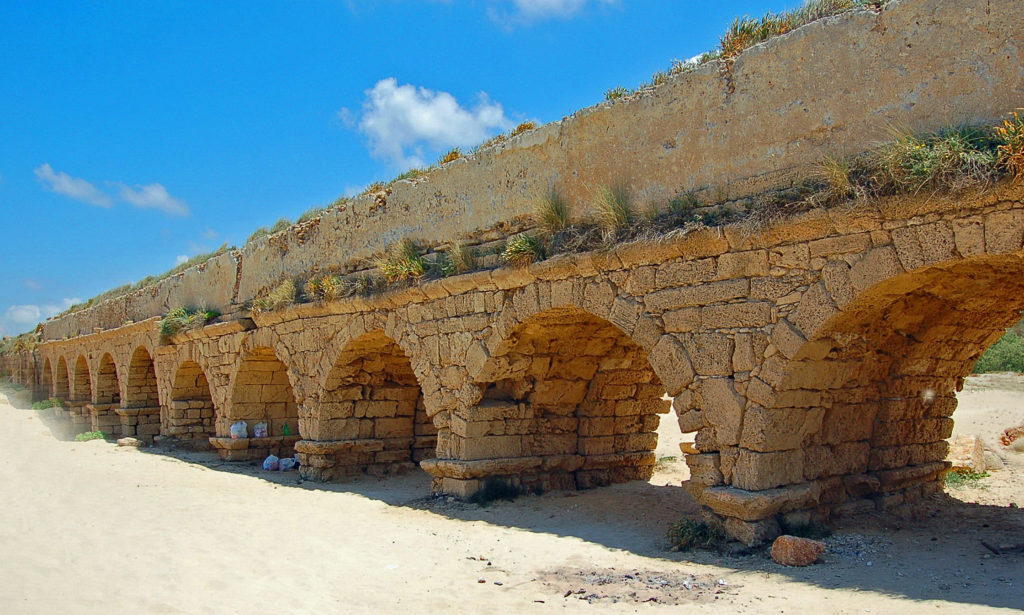
King Herod is known to Christians for killing infants living in Bethlehem at the time of the birth of Jesus. He is known to history for his extraordinary building projects.
In 40 B.C., the Roman Senate proclaimed Herod “King of Judea,” but it was not until 37 B.C., that he gained control of a tiny backwater kingdom that lacked even a harbor. In 22 B.C., Herod began building an artificial harbor on the Mediterranean coast about 25 miles north of Jaffa. When completed in 13 B.C., the harbor was the largest along the eastern Mediterranean, rivaling Cleopatra’s harbor in Alexandria. Herod also built a 164-acre port city adjacent the harbor. When the city was completed in 10 B.C., Herod named it “Caesarea” in honor of Caesar Augustus. Caesarea included 100 warehouses, a temple to Augustus, a lighthouse, a hippodrome and a 4000-seat theatre.
When Herod began building Caesarea, it lacked a source of fresh water for a city of the size he envisioned, so Herod commissioned an aqueduct from a spring near the base of Mount Carmel, about five miles northeast of Caesarea. The high aqueduct, supported by brick arches, carried enough water to supply a city of 50,000. Herod died in 4 B.C. and his port city continued to grow. By 130 A.D., Herod’s aqueduct was no longer capable of supplying all the water Caesarea needed. Roman Emperor Hadrian, who visited the city in 130, ordered that another aqueduct be built alongside the one build by Herod, using the same materials and construction techniques. The parallel aqueducts carried water to Caesarea for about 1200 years.
Today Herod’s port city, named “Caesarea Maritima” to distinguish it from Caesarea Philippi, is one of Israel’s most visited sites. A large section of Herod’s aqueduct is still intact near the ruins of the city.
Comments are closed.